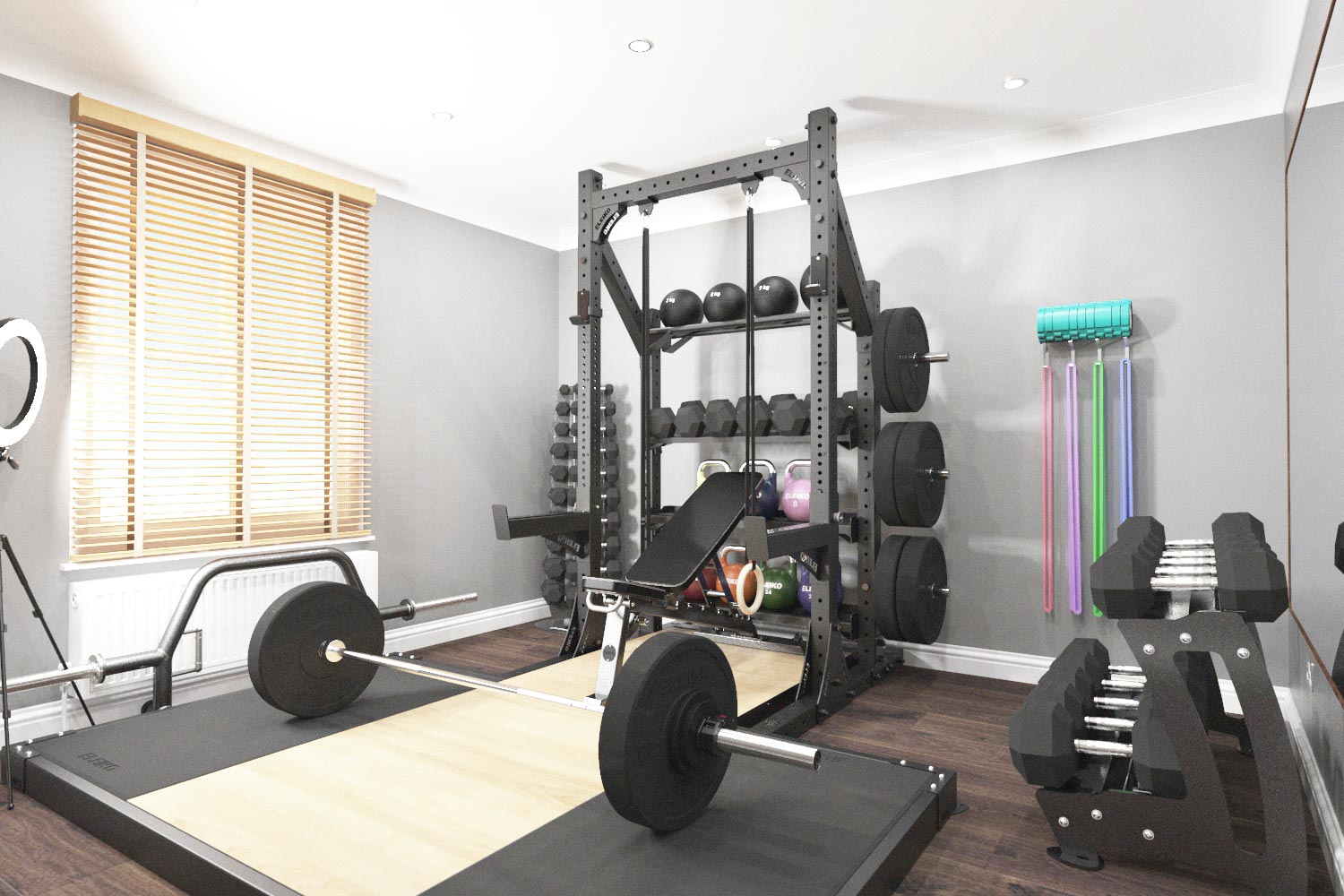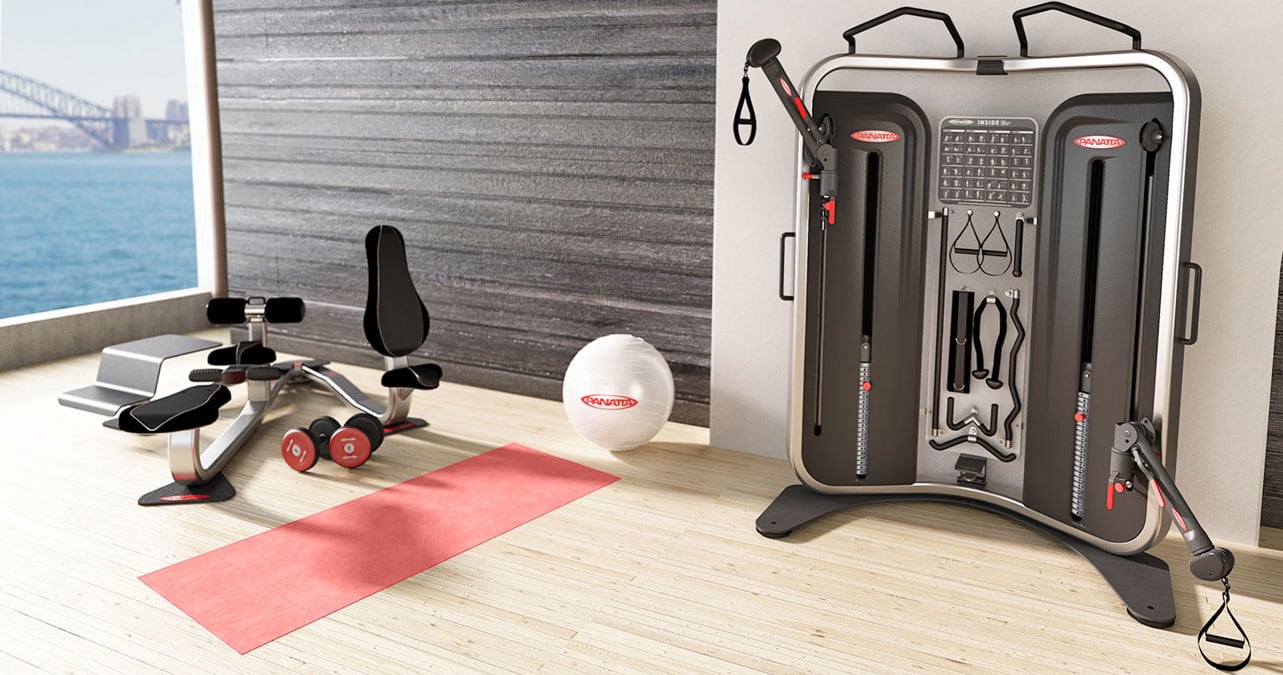Broadly speaking, a home gym area has three or four main components. Stretching, Cardiovascular, Strength, and maybe yoga/pilates/suspension. There is overlap, obviously, but these are the main 'areas' we see clients trying to fit in their home gym.
And as a quick aside, this is why ConnectFit specializes in complete gym design, soup to nuts, flooring to service.
But today, we are going to focus on the strength component. As it is a place there is a lot more confusion and misinformation. Also, an average home gym changes every 3-4 years, with a new piece added or subtracted, and strength equipment is much harder to move around. Avoid hard-mounted strength equipment if at all possible because of this.
There are three main types of strength equipment, and they all have advantages and disadvantages. Freeweights, Multigyms and Cable Trainers. Freeweights are the oldest, Multigyms go back to the 70s and 80s, and cable trainers are the newest.
There are some areas where, in the interest of space or versatility, hybrids have been created. But they are always a compromise in actual capability in these machines. But while it would be nice (and the most effective) if every home gym could fit in all three separate modalities, sometimes the space dictates compromise.
Freeweight equipment includes all dumbbell and bar pieces, benches and cages, as well as plate loaded pieces. And as a Maxim, I always say every gym, from 1000 to 100000, starts with a good bench and a set of dumbbells. Every athletic facility has these, and they are incredibly useful and versatile. But they are also the most dangerous pieces, especially without a spotter. And there is a lot to learn about the different types and qualities involved. We have a whole blog written just on understanding dumbbells.
Multigyms and Selectorized pieces grew out of the concept of the old Nautilus/Universal style machines, using weight stacks for resistance. The extreme example is the single machines a full gym has for each muscle group, which these are the safest type of strength equipment. However, these are very expensive machines and the space required to get all the major muscle groups is pretty large.
Multigyms, or at least good ones, like Hoist, take the biomechanics of these single station machines and try to combine them into a few or one machine. A good multigym has the advantages of biomechanics, safety, and especially speed of use.
However, a lot of the brands that make these pieces don't really make commercial equipment or equipment you ever see in a real gym, so their biomechanics are often very flawed and possibly dangerous.
I will also point out a little-known fact, that in particular, as we get older, the Leg Press machine gets more and more useful for building and rebuilding the strength in the posterior chain.
.jpeg?width=201&name=images%20(2).jpeg)
Cable trainers, also called Functional trainers, are the newest style. Using weight stacks, they allow you to position cable outlets with handles and bars to get resistance from different positions. This allows a huge amount of variability and flexibility, in a very small space. Cable trainers as a category are pretty new, less than twenty years old, but they are very popular. The first generation of these moved the cable outlets up and down, now called a 'Simple Functional Trainer', but many newer ones, pioneered by Freemotion, started adjusting laterally as well as vertically, allowing for a lot more exercise variety as well as fitting different sized people. We call these "Complex Functional Trainers".
Cable gyms are smaller and incredibly versatile, but they do require lots of position changes and a lot more understanding to use them than a traditional multigym. 
We do have machines that mix some of these, as mentioned, like the Hudson Miami Gym, or the Eleiko cable system attachment. But this covers the important divisions in the strength category.
Our advantage at ConnectFit is that we have on-staff people who have not just sold fitness equipment but helped design the equipment. And have designed literally thousands of fitness spaces.
Connect with us to talk about your space, or if you have any questions about your workout. We are all about taking care of our clients.




COMMENTS